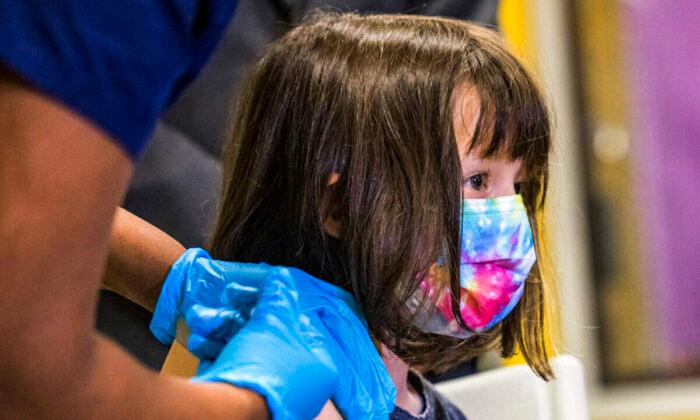Medical professionals report that children diagnosed with the new Omicron subvariant of COVID-19, XBB.1.16, display conjunctivitis symptoms.
“For the last 2 days, have [sic] started getting pediatric Covid cases once again after a gap of 6 mo! [sic],” he wrote. “An infantile phenotype seems emerging,” he wrote, adding that children coming in to be treated displayed high fevers, colds, and coughs and “non-purulent, itchy conjunctivitis w/sticky eyes [sic], not seen in earlier waves.”
Conjunctivitis Explained
Conjunctivitis is a common eye infection that creates inflammation of the thin layer of tissues that line the eyelid, according to the Centers for Disease Control and Prevention (CDC).It is typically caused by various viruses, bacteria, or allergens, and inflammation usually starts in one eye before spreading to the other within a few days.
Symptoms of conjunctivitis typically include pink or red coloring in the whites of the eyes, increased eye watering, itching, irritation or burning, and discharge, among others.
However, the health agency notes that a common cold, flu, or other respiratory infection may also cause such symptoms. According to the Sun Sentinel, health officials also pointed out that the United States has now entered allergy season with the arrival of spring, which could also trigger conjunctivitis.
Severe Illness Not Linked to New Variant
The latest reports regarding XBB.1.16—dubbed “Arcturus”—and cases of conjunctivitis in children come after the World Health Organization (WHO) upgraded the variant to a “variant of interest,” citing its ability to evade immune system response.In its latest weekly epidemiological update, the WHO said XBB.1.16 had been reported in 31 countries. During the week ending April 2, it accounted for 4.2 percent of SARS-CoV-2 sequences uploaded to the international GISAID database—marking a 0.5 percent increase from the week ending March 5.
“Due to its estimated growth advantage and immune escape characteristics, XBB.1.16 may spread globally and contribute to an increase in case incidence,” WHO officials wrote of the variant first detected in India in January.
Despite this, WHO officials noted that XBB.1.16 does not seem to be causing more severe illness in individuals diagnosed with the virus.
“However, at present, there is no early signal of an increase in severity. The initial XBB.1.16 risk assessment is ongoing and is expected to be published in the coming days,” WHO officials said in their report.






